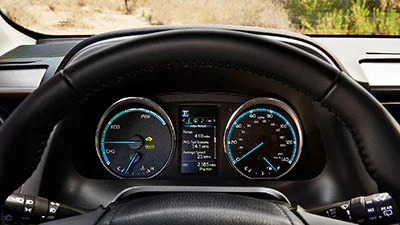It’s a rare occasion when a global automaker releases a new series of powertrains. Toyota’s all-new Dynamic Force lineup is poised to shake up the automotive industry and unlock a new world of fuel efficiency, performance, and eco-friendliness.
What Is Dynamic Force?
Dynamic Force powertrains are a critical component of the Toyota New Global Architecture (TNGA) platform. Modular parts and technologies will streamline and simplify Toyota’s manufacturing process. Behind each new vehicle’s unique skin will be key systems — such as drivetrain, shifters, air bags, and steering — of which there are just a small handful, handpicked for each specific vehicle. Toyota anticipates a savings of about 20 percent and more consistent quality and performance as well.
Dynamic Force Engines
Toyota plans to develop nine core engine styles with 17 different variations. These new engines are expected to provide a 20 percent jump in fuel efficiency, a 10 percent increase in power, and a 15 percent reduction in CO2 emissions. These improvements are a result of reduced internal friction and decreased loss of energy through the cooling and exhaust systems. Adding to performance are lower centers of gravity and lower engine heights.
To date, only one engine has been revealed. This 2.5-liter four-cylinder will probably make its debut in the 2018 Camry. High-speed combustion with variable control is one of the many new technologies that makes this an engine that Toyota claims is among the world’s most energy-efficient offerings.
Dynamic Force Transmissions
Four new automatics, including a new Continuously Variable Transmission, will be included in the Dynamic Force lineup. Two have surfaced so far. The eight-speed is for front-wheel drive vehicles, and the 10-speed is for rear-wheel drives. Some of the world’s fastest gear changes can be found in the 10-speed. Of the four new transmissions, a total of 10 variations will emerge.
Friction is the enemy of all transmissions, which is why the new Dynamic Force offerings feature low-friction clutch packs and gear teeth surfaces. When compared to a six-speed automatic, about 50 percent of friction loss is recovered. Close-ratio gear shifting ensures optimal acceleration. Despite their enhanced performance, these new transmissions are both lighter and smaller than the ones they will replace.
Dynamic Force Hybrid Systems
As the manufacturer of the Prius, perhaps the most iconic vehicle on the planet, Toyota naturally includes hybrids in its TNGA vision. The company has developed the Toyota Hybrid System II in order to trim weight and size from its hybrid drivetrain. Six different Dynamic Force hybrid systems are in the works, with 10 total versions. Three have already been unveiled.
Plug-in hybrids with also receive a Dynamic Force refresh. A new dual-mode drive system will allow hybrid motors to power the wheels instead of merely serving as generators for the batteries. A new lithium-ion battery will feature a higher capacity and extend EV range.
Toyota claims it’s a bit too early to specify when these new systems will show up, but it predicts that by 2021, about 60 percent or more of its vehicles will use TNGA Dynamic Force setups. Once again, Toyota is poised to change the automotive world, and we can’t wait to see what’s next.






